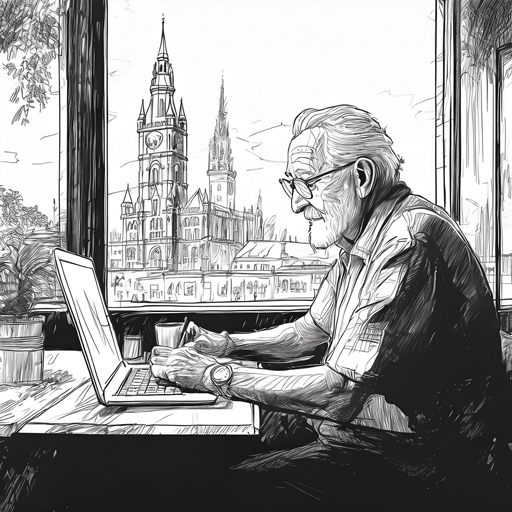Understanding YOLO: Real-Time Object Detection Revolution

In the rapidly evolving field of computer vision, real-time object detection has become crucial for applications ranging from autonomous vehicles and surveillance to robotics and augmented reality. One breakthrough technology that has significantly influenced this domain is YOLO (You Only Look Once).
What is YOLO?
YOLO is a state-of-the-art, deep learning-based object detection system designed for real-time applications. Unlike traditional object detection models that apply a classifier to multiple regions in an image and then perform multiple inferences, YOLO treats object detection as a single regression problem, straight from image pixels to bounding box coordinates and class probabilities.
This approach greatly improves the speed and efficiency of object detection without a substantial loss in accuracy.
How Does YOLO Work?
YOLO divides the input image into an SxS grid. Each grid cell predicts a fixed number of bounding boxes along with confidence scores for those boxes. These confidence scores reflect:
- The likelihood that a bounding box contains an object.
- The accuracy of the bounding box prediction.
Additionally, each cell predicts the probability distribution over predefined classes. The final detection output is generated by combining these bounding boxes and class probabilities.
Key Steps in YOLO’s Pipeline:
Image Input: The entire image is processed at once (hence "You Only Look Once").
Grid Division: The image is divided into a grid.
Bounding Box Prediction: Each grid cell predicts potential bounding boxes and confidence scores.
Class Prediction: Class probabilities are predicted for each bounding box.
Filtering: Confidence thresholds and non-max suppression (NMS) remove overlapping boxes to refine detections.
Why YOLO is Popular?
Speed YOLO is incredibly fast because it requires only a single network evaluation per image to predict all bounding boxes and class probabilities. Early versions of YOLO could run at frames per second (fps), with lighter versions capable of 1fps.
Simplicity The unified architecture simplifies training and inference compared to multi-stage approaches like R-CNN and SSD, which have separate region proposal and classification steps.
High Accuracy YOLO provides a good balance between speed and accuracy. Continuous improvements in newer YOLO versions (e.g., YOLOv1,YOLOv2,YOLOv3,YOLOv4 and the recent YOLOv8 have significantly improved detection quality, especially for small objects.
Versatility YOLO works well for a wide range of applications—from vehicle detection and facial recognition to medical imaging and industrial inspection.
Variants and Evolution of YOLO
- YOLOv1: Introduced the concept of unified detection but struggled with small objects.
- YOLOv2 (YOLO9000): Improved accuracy and added the ability to detect over 90object categories.
- YOLOv3: Added multi-scale predictions, improving small object detection.
- YOLOv4: Introduced additional training and architecture tricks for enhanced performance.
- YOLOv5: Lightweight and widely adopted, with easy deployment options.
- YOLOv7 & YOLOv8: Further improvements on accuracy, speed, and robustness.
Applications of YOLO
- Autonomous Driving: Detecting pedestrians, vehicles, and traffic signals.
- Security Surveillance: Real-time threat detection and monitoring.
- Retail and Inventory Management: Counting and identifying objects.
- Healthcare: Analyzing medical images for diagnostic purposes.
- Robotics: Enabling robots to understand and interact with their environment.
Limitations and Considerations
- Localization errors: YOLO tends to make more localization errors compared to region-based detectors.
- Small Object Detection: Earlier versions struggled with very small objects, although newer versions have improved.
- Trade-off: While YOLO is fast, some accuracy trade-offs exist compared to slower but more precise detectors.
YOLO's innovative approach to object detection revolutionized how machines understand images and videos in real-time. Its balance of speed and accuracy propels many modern applications, making it a cornerstone technology in the fields of artificial intelligence and computer vision.
For anyone interested in real-time
